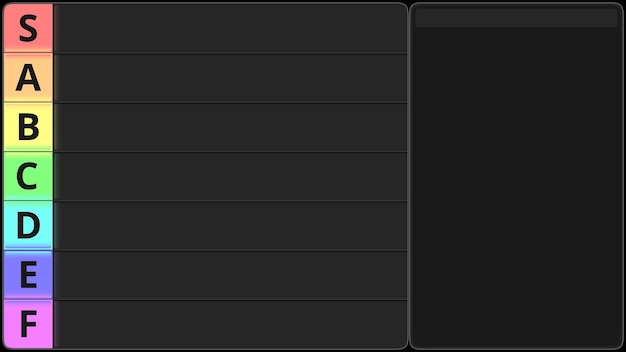Streaming Accessibility: Options for US Viewers with Disabilities

Anúncios
Streaming accessibility ensures viewers with disabilities in the US can access and enjoy online video content through features like captions, audio descriptions, and screen reader compatibility.
Anúncios
The world of streaming offers endless entertainment and information, but it’s only truly valuable if everyone can access it. For viewers with disabilities in the US, streaming accessibility is paramount. This article explores the various options available to ensure inclusive streaming experiences.
Understanding Streaming Accessibility for Viewers With Disabilities in the US
Streaming accessibility refers to the features and technologies that allow people with disabilities to access and enjoy streaming content. In the US, significant strides have been made to ensure inclusivity, but understanding these options is key to a seamless viewing experience.
Anúncios
Let’s dive into what makes streaming accessible and why it matters.
Importance of Accessible Streaming
Accessible streaming is not just about compliance; it’s about inclusivity. By providing features like captions and audio descriptions, streaming services open their content to a broader audience, ensuring that everyone can participate in the shared cultural experience.
- Enhanced User Experience: Accessibility features improve the overall viewing experience for all users, not just those with disabilities.
- Legal Compliance: In the US, various laws and regulations mandate accessibility in digital media, including streaming services.
- Wider Audience Reach: Accessible content reaches a larger audience, increasing viewership and engagement.
Accessible streaming enhances user experiences. Legal compliances ensure streaming services adhere to digital media standards. Ultimately, this expands access, benefitting a wider audience.
Captioning: Enabling Text-Based Understanding
Captioning is a crucial accessibility feature that provides a text-based representation of the audio content in a video. This is particularly beneficial for viewers who are deaf or hard of hearing, but it also helps those watching in noisy environments or learning a new language.
Lets delve into types of captioning available.
Types of Captions
There are two primary types of captions: closed captions (CC) and open captions. Closed captions can be turned on or off by the viewer, while open captions are always visible and are part of the video file itself.
- Closed Captions (CC): User-controlled, providing flexibility for viewers to enable or disable captions as needed.
- Open Captions: Always visible, ensuring accessibility in environments where closed captions may not be supported.
- Real-Time Captions: Generated live, often used in news broadcasts or live events to provide immediate text-based access.
Closed captions are user-controlled, while open captions offer constant visibility. Real-time captions provide immediate text access during live broadcasts or events.

Audio Description: Painting a Picture With Words
Audio description (AD) is a form of narration that describes the visual elements of a video, such as actions, facial expressions, and scene changes. This feature is essential for viewers who are blind or have low vision, enabling them to follow the storyline and understand the context fully.
Let’s check ways audio description elevates streaming content.
How Audio Description Works
Audio description involves adding narrated descriptions during pauses in dialogue or other audio elements. These descriptions provide crucial visual information that would otherwise be missed by visually impaired viewers.
Audio descriptions provide viewers who are blind or have low vision with the visual elements of video content.
Screen Readers and Streaming: Navigating Interfaces
Screen readers are software programs that allow people with visual impairments to use computers and mobile devices. These programs convert text and other elements on the screen into speech or braille, enabling users to navigate interfaces and access content.
Discover how screen readers enhance the streaming experience.
Compatibility Challenges
However, not all streaming platforms and apps are fully compatible with screen readers. Many interfaces lack proper labeling or have complex layouts that make navigation difficult. This can create significant barriers for visually impaired users.
- Inconsistent Labeling: Lack of clear and consistent labels for buttons and controls.
- Complex Layouts: Difficult-to-navigate interfaces with multiple layers and nested menus.
- Dynamic Content: Content that changes frequently, making it hard for screen readers to keep up.
Inconsistent labeling and complex layouts pose navigation challenges. Dynamic content also makes it difficult for screen readers.
Addressing these challenges is crucial to ensuring that visually impaired viewers can fully participate in the streaming experience. Screen readers and streaming platforms must improve collaboration to offer greater accessibility.

US Laws and Regulations: Ensuring Compliance
In the United States, several laws and regulations mandate accessibility in digital media, including streaming services. These laws aim to ensure that people with disabilities have equal access to information and entertainment.
Let’s examine these regulations.
Key Legislation
Key pieces of legislation include the Americans with Disabilities Act (ADA) and the Twenty-First Century Communications and Video Accessibility Act (CVAA). The ADA prohibits discrimination based on disability, while the CVAA specifically addresses accessibility in communication technologies.
The ADA and the CVAA are essential for regulating digital media accessibility.
Best Practices for Streaming Services in the US
To ensure streaming accessibility, services in the US should adhere to specific best practices. These practices encompass the design, development, and delivery of content, ensuring that it is usable by people with disabilities.
Discover specific methods in the streaming sector for more inclusive viewing.
Implementing Accessibility Features
This includes providing high-quality captions, accurate audio descriptions, and screen reader-compatible interfaces.
- High-Quality Captions: Accurate, synchronized, and customizable captions.
- Accurate Audio Descriptions: Detailed descriptions of visual elements.
- Screen Reader Compatibility: Properly labeled and navigable interfaces.
Streaming services can enhance accessibility significantly by delivering high-quality captions, accurate audio descriptions and screen reader compatibility.
Future Trends in Streaming Accessibility
The future of streaming accessibility looks promising, as advancements in technology and growing awareness of inclusivity drive innovation. Emerging trends are set to transform the streaming experience for viewers with disabilities.
Let’s explore trends shaping accessibility in streaming.
Technological Advancements
Artificial intelligence (AI) and machine learning (ML) are playing an increasingly important role in accessibility. AI-powered captioning and audio description tools can automate the creation of these features, making them more efficient and cost-effective.
Advancements in AI-powered multimedia technology are improving streaming accessibility, fostering inclusion.
| Key Aspect | Brief Description |
|---|---|
| 🎧 Audio Description | Narration describing visual elements for viewers with low vision. |
| 💬 Captioning | Text-based representation of audio, aiding viewers with hearing loss. |
| 📱 Screen Reader Support | Ensuring streaming interfaces work with screen readers. |
| ⚖️ Legal Compliance | Following US laws such as ADA and CVAA for digital accessibility. |
Frequently Asked Questions
▼
Streaming accessibility refers to the features and technologies that allow people with disabilities to access and enjoy streaming content. Common features include captions, audio descriptions, and screen reader compatibility.
▼
Accessible streaming is important because it ensures that everyone, regardless of their abilities, can enjoy and benefit from online content. It promotes inclusivity and equal access to information and entertainment.
▼
Closed captions are text-based representations of the audio content in a video, which viewers can turn on or off. They are beneficial for people who are deaf or hard of hearing, or those watching in noisy environments.
▼
Audio description involves adding narrated descriptions during pauses in dialogue or other audio elements. These descriptions provide crucial visual information for viewers who are blind or have low vision, enhancing their understanding.
▼
Key US laws include the Americans with Disabilities Act (ADA) and the Twenty-First Century Communications and Video Accessibility Act (CVAA). These laws mandate accessibility in digital media, ensuring equal access.
Conclusion
Streaming accessibility is essential for ensuring that everyone, including viewers with disabilities in the US, can fully enjoy and benefit from online video content. By providing features like captions, audio descriptions, and screen reader compatibility, streaming services can create a more inclusive and equitable viewing experience. Embracing these accessibility options not only complies with legal mandates but also enriches the overall streaming experience for all users.





